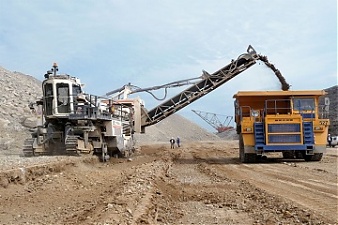Ecology, Energy, Estonia, EU – Baltic States
International Internet Magazine. Baltic States news & analytics
Saturday, 20.12.2025, 03:08
Estonian minister: Oil shale electricity must be replaced by renewable sources
 Print version
Print version |
|---|
Kokk said in a press release that every megawatt-hour of electricity produced from renewable sources to replace oil shale electricity would reduce Estonia's greenhouse gas emissions by nearly 1.2 tons of carbon dioxide.
"In the European Union, the quota market will also be extended to sectors other than large-scale energy in the coming years. If Estonia is able to reduce its carbon dioxide emissions more than projected, that is reduce it also in the transport, light energy and agriculture sectors from 6.2 mln tons to below its current target of 5.5 mln tons by 2030, we will create an opportunity for the country to generate revenue by trading with units on the transnational quota market," the minister said.
In shale oil production, which has significantly lower greenhouse gas emissions than oil shale combustion, the Ministry of the Environment is currently considering two projects -- the construction of a new oil plant and a shale oil pre-refinery. As the increase in oil production will reduce electricity production from oil shale combustion, it will be in line with Estonia's 2030 climate targets.
At the same time, it is necessary to create the conditions for new investments in renewable electricity production to compensate for declining electricity production upon the ministry's proposal. Namely, renewable energy technologies have become cheaper, which means that other issues that are holding back the development of the sector can be addressed. It is possible, for example, to purchase radars enabling the mitigation of national defense restrictions and to partly co-finance the joining of new renewable electricity plants.
In heat production, the Ministry of the Environment finds that one solution is to continue supporting the transition to renewable fuels and also to build a cogeneration plant based on renewable sources in Narva, which will continue to use oil shale. As heat generation from oil shale is very carbon-intensive and influenced by the ever increasing carbon price, a cogeneration plant would also help limit the price increase of district heating.
In the sectors outside large-scale energy, the ministry estimates that transport has the greatest potential for reducing emissions. The railway electrification plan has already been approved by the government.
In addition, the Ministry of the Environment believes that directing trade from road to rail, supporting the purchase of electric cars, transitioning public transport to biomethane and electricity, developing bicycle infrastructure in cities and promoting tram traffic in Tallinn would contribute to achieving the climate goals. The renovation of buildings and improvement of manure management in agriculture and the production of renewable energy from it also have significant potential for reducing greenhouse gas emissions.
The government at its Cabinet sitting on Thursday listened to proposals by the Ministry of the Environment on how to achieve the goal of reducing greenhouse gas emissions in Estonia by 2030. Proposals included continuing the transition to renewable fuels, developing public transport, electric cars and light traffic, and supporting rail transport.
"By the middle of this century, Estonia must become a country with low greenhouse gas emissions but a competitive economy. To this end, the government intends to make clear choices in the coming months on the issues on which this goal will depend," Prime Minister Juri Ratas said.
"Solutions to these issues lie in the fields of energy, industry, transport, agriculture and construction, and some of them require large-scale investment and mean far-reaching innovation. Recent discussions on the prospects of the oil shale industry or wind farms are just a few examples. It is important that we look to the future, both in our discussions and in our decisions, and are guided by the interests of both present and future generations," the prime minister said.
Ratas affirmed that confirmed that the proposals of the Ministry of the Environment will be dealt with in-depth by the newly established climate and energy committee of the government. The national debate will be summed up by a climate conference led by the prime minister and in cooperation with the Academy of Sciences on Sept. 13.
According to the current agreement, Estonia is required to reduce its total greenhouse gas emissions by 70% compared to 1990 levels by 2030. The Ministry of the Environment, in cooperation with other ministries, must provide a detailed assessment of the impact, cost, implementation time frame and expected outcomes in 2021-2030 by the time the next state budget strategy is discussed.








 «The Baltic Course» Is Sold and Stays in Business!
«The Baltic Course» Is Sold and Stays in Business!

